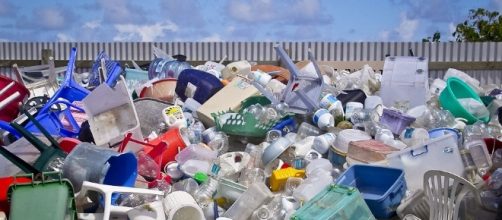A breakthrough happened in Spain as scientists discovered a species of moth that eats Plastic and effectively dissolves it in its guts. The discovery show extreme potential in solving the world's waste problem. If scientists can isolate the enzyme that breaks down plastic, a new method of waste management and recycling process will be created.
Greater wax moth
The Greater wax moth and its larva are the sources of excitement in Spain. Scientists have discovered that the moth and its larva have enzymes that can easily breakdown plastic into organic compounds.
This is extreme helpful in solving the problem of plastic waste as it will take roughly 1,000 years for simple plastic bags to biodegrade. However, through the help of the enzyme inside the greater wax moth, this time frame can be drastically cut short.
Federica Bertocchini, a scientist at the institute of Bio-medicine and Biotechnology of Cantabria, Spain, who is also a beekeeper is spearheading the research on this. For hundreds of years, European beekeepers have considered the greater wax moth as a pest as it eats the beeswax, which is essential for making honey. She noticed that these Moths leave a wax-like substance, which if placed on plastic, can dissolve it.
What have been research already about the plastic-eating capability of greater wax moths
The University of Cambridge replicated the experiment conducted by Bertocchini and indeed the wax produced by the moth and its larva are able to quickly break down plastics into organic products for quick decomposition.
It is still not sure when will this discovery be developed, but unless funding on this research becomes adequate, this garbage-solving potential will only go to waste.
What is the potential of discovering a way to quickly dissolve plastic?
According to recent statistics, the US throws away 60 million plastic bottles a day. This is a major problem as landfills are slowly being filled up by millions of tons of plastic every year.
The research on the plastic-dissolving enzymes of this moth species will be a panacea for plastic disposal.
If this enzyme is successfully isolated and enhanced, this may become one of the major breakthroughs of the century. After the invention of plastic during the middle of the 20th century, the disposal of it has become quite an issue. Today, with this discovery, society can sigh a breath of relief, knowing that the plastic problem will now be solved at last.

